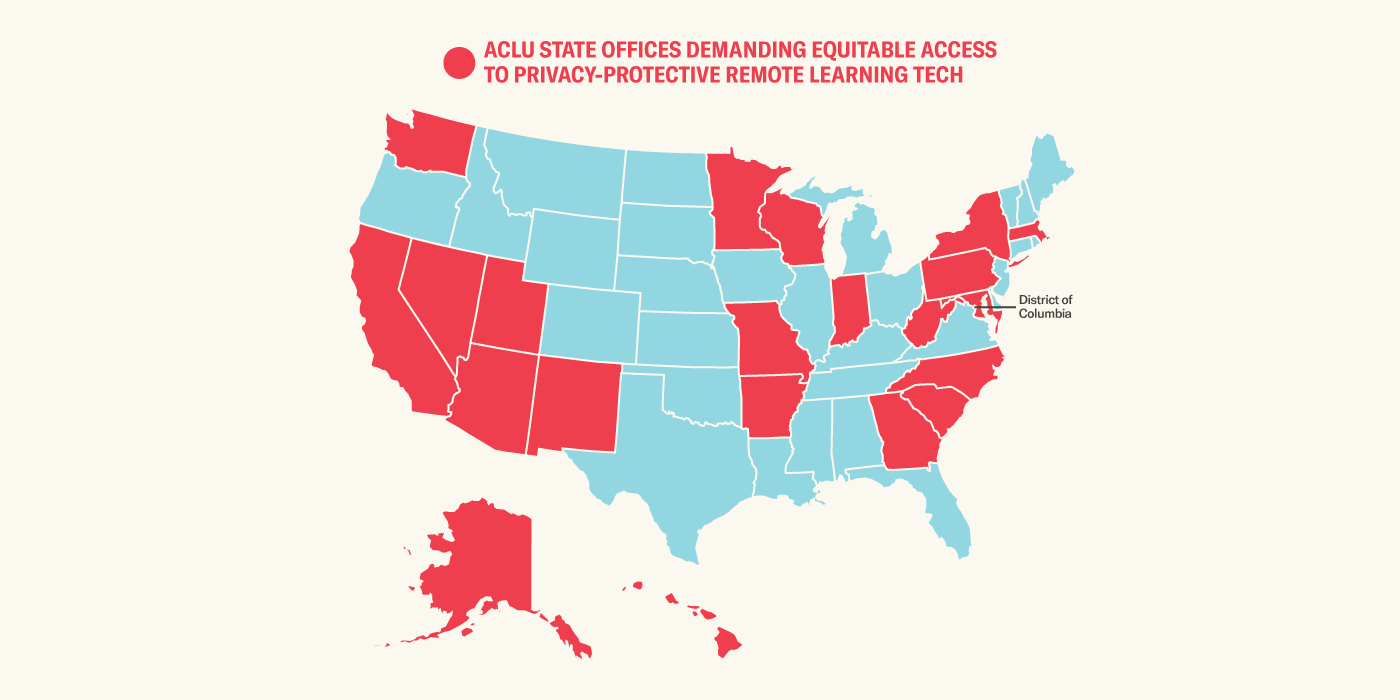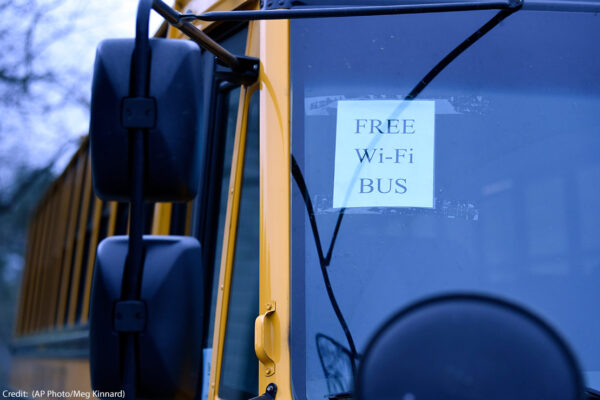Mia’s high school peers are completing class assignments from their school parking lot because they, like many families in their rural Maryland community, lack access to internet at home. Delina, a high school junior from Arizona, has to wait until all her younger siblings finish their schoolwork using the one computer at home before she can use it to start hers. One student from New Jersey fears that the lack of privacy protections for students using remote learning technology puts their mom at increased risk of deportation.
This is the reality of education in America during the COVID-19 crisis, according to the students who’ve shared their experiences with the ACLU. Students recently thrust into distance learning by school closures are worried they’ll fall behind their peers — or even have to repeat the school year — simply because their families can’t afford high-speed internet or a computer. Others fear marketers and other companies are collecting, storing, and even sharing their highly personal information because current remote learning technologies lack basic privacy protections.
We’re calling on Congress and state and local governments nationwide to take immediate decisive action to address the current education crisis in America. In letters sent to state and local officials in 23 states, we’re demanding all students have equal access to the technologies that make effective remote learning possible, and that states and school districts mandate the implementation of strong and uniform privacy safeguards to protect students when they are engaged in remote learning.

We’re also asking Congress to provide billions of dollars in funding as part of the next COVID-19 relief package to meet the broadband access and technology needs of students, people with low income, and other impacted individuals.
Our children deserve — and governments have a legal obligation to provide — safe and equal access to an adequate education.
There are more than 40 million households in the U.S. without an internet subscription, and 11 million of those homes lack any type of computing device. The lack of access disproportionately affects people of color, regardless of income, and reflects our society’s structural racism. Ten percent of Black and Hispanic people in this country have no internet subscription and 13 percent of American Indians and Alaska Natives are also without internet access at home.
With unemployment at Great Depression levels, the number of people and families lacking access to technology and broadband services is likely to rise. The effects of this growing digital divide will not only impact the virtual classroom, but ripple well beyond it to other vital services.
For young people and adults, the result is being unable to access telehealth services, apply for benefits, attend religious services, order groceries and medications, or communicate with families and communities. Finding employment will become even more difficult, while others may not be able to work safely from home, even if their employer would permit it, without broadband internet access. Older adults lacking access to broadband telehealth services may be forced to risk their health by leaving their homes for medical appointments.
People with disabilities face even greater challenges as services move online. For instance, many students who have vision disabilities, learning disabilities, and limitations in upper body mobility may not be able to access online classes if the format is not accessible to screen readers and other assistive technology.
The government must step in and provide support to the students, older adults, families with low incomes, and those impacted by the economic crisis that need broadband connectivity and connection-enabled technology to live their lives as safely as possible until the pandemic subsides. As part of the next COVID-19 relief package, Congress must provide:
- $2-3 billion per month for the duration of the crisis and for at least 30 days after the crisis ends to provide an emergency broadband benefit to all low-income households and all households experiencing hardship as a result of the pandemic, and
- $4 billion, at minimum, for an Emergency Connectivity Fund to provide immediate assistance for students and library patrons that need access to technology to engage in remote and distance learning in their homes.
State and local government officials must also fulfill their duties to provide students, including students with disabilities and from low-income families, access to their educations.
With the crisis showing no signs of subsiding soon, and the prospect of returning to everyday life uncertain in the near term, we must take bold action across multiple fronts to ensure access to broadband and connectivity-enabled technology for everyone. We must also make sure this crisis doesn’t expose our children to even more invasive data collection practices.
As Ella Rosenberg, a high school junior from North Carolina, put it, “No kid on Earth was responsible for these circumstances and so we shouldn’t be suffering because of it.”
Kate Ruane, Senior Legislative Counsel, ACLU

